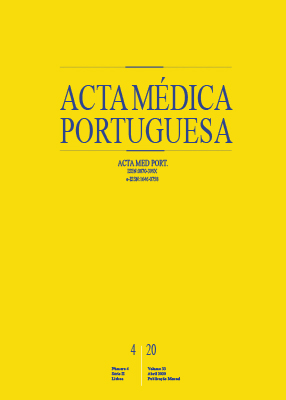Cutaneous Manifestations in Mastocytosis: Update
DOI:
https://doi.org/10.20344/amp.12189Keywords:
Mast-Cell Sarcoma, Mastocytosis, Cutaneous, Systemic, Skin DiseasesAbstract
Introduction: Mastocytosis is characterized by the clonal expansion of morphological and immunophenotypically abnormal mast cells in different organs. The skin is the most frequently affected tissue. Virtually all children and more than 80% of adult patients with mastocytosis show cutaneous lesions.
Material and Methods: The present article describes the symptoms and signs in cutaneous mastocytosis, based on the review of recently published international consensus guidelines.
Discussion: According to the 2016 World Health Organization classification, mastocytosis can be divided in cutaneous mastocytosis, systemic mastocytosis and mast cell sarcoma. Cutaneous mastocytosis is subclassified in three subtypes: maculopapular cutaneous
mastocytosis, diffuse cutaneous mastocytosis and cutaneous astocytoma. Telangiectasia macularis eruptiva perstans is no longer
considered a distinct entity.
Conclusion: Based on the age of onset, cutaneous manifestations of mastocytosis can be variable. The classification of cutaneous mastocytosis has recently been updated. Typically, in patients with childhood-onset mastocytosis, the disease occurs as cutaneous mastocytosis and shows spontaneous resolution around puberty. In contrast, adult patients, despite having also cutaneous lesions, often show systemic involvement and the course of the disease is usually chronic.
Downloads
Downloads
Published
How to Cite
Issue
Section
License
All the articles published in the AMP are open access and comply with the requirements of funding agencies or academic institutions. The AMP is governed by the terms of the Creative Commons ‘Attribution – Non-Commercial Use - (CC-BY-NC)’ license, regarding the use by third parties.
It is the author’s responsibility to obtain approval for the reproduction of figures, tables, etc. from other publications.
Upon acceptance of an article for publication, the authors will be asked to complete the ICMJE “Copyright Liability and Copyright Sharing Statement “(http://www.actamedicaportuguesa.com/info/AMP-NormasPublicacao.pdf) and the “Declaration of Potential Conflicts of Interest” (http:// www.icmje.org/conflicts-of-interest). An e-mail will be sent to the corresponding author to acknowledge receipt of the manuscript.
After publication, the authors are authorised to make their articles available in repositories of their institutions of origin, as long as they always mention where they were published and according to the Creative Commons license.









